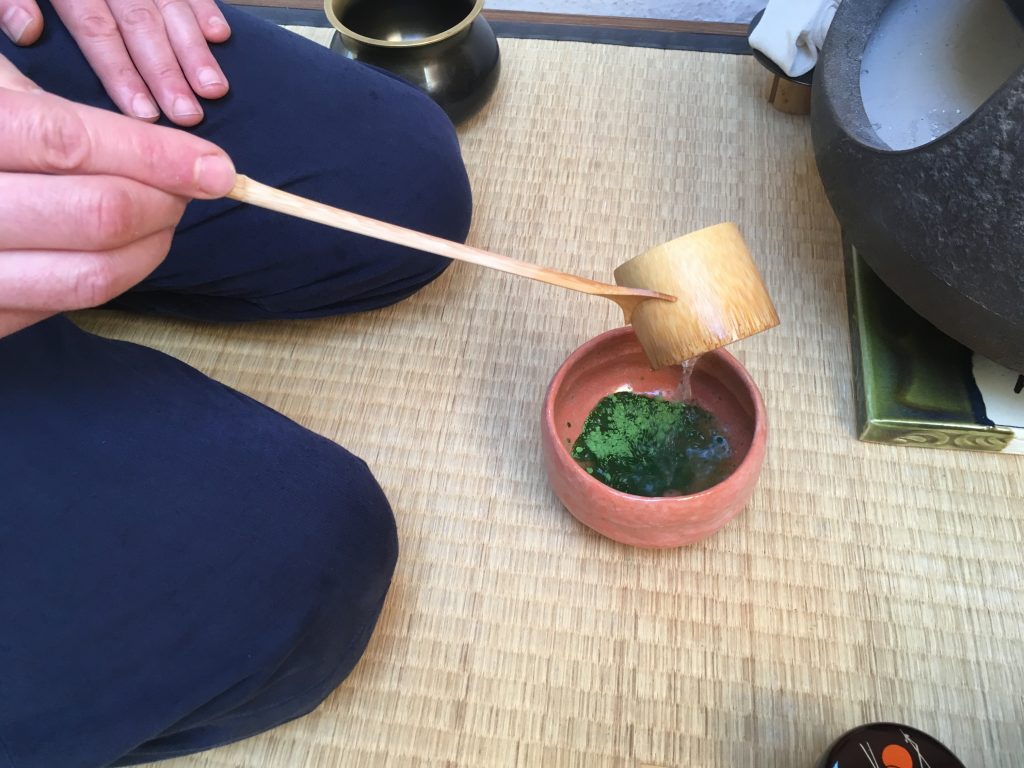After exploring mind-states in different places at home I wanted to find out what is the best time and the best activity to base a wisdom intervention on. I started logging my own activities using the method of experience sampling. This method lets you check a certain set of variables at random intervals throughout the day. I used the Reporter app for IOS. I asked myself two questions: what are you doing? What is your current mind-state? The app automatically time-stamps the entries. I logged from 27th of November till December 12th. And a second period from January 7th till 20th.
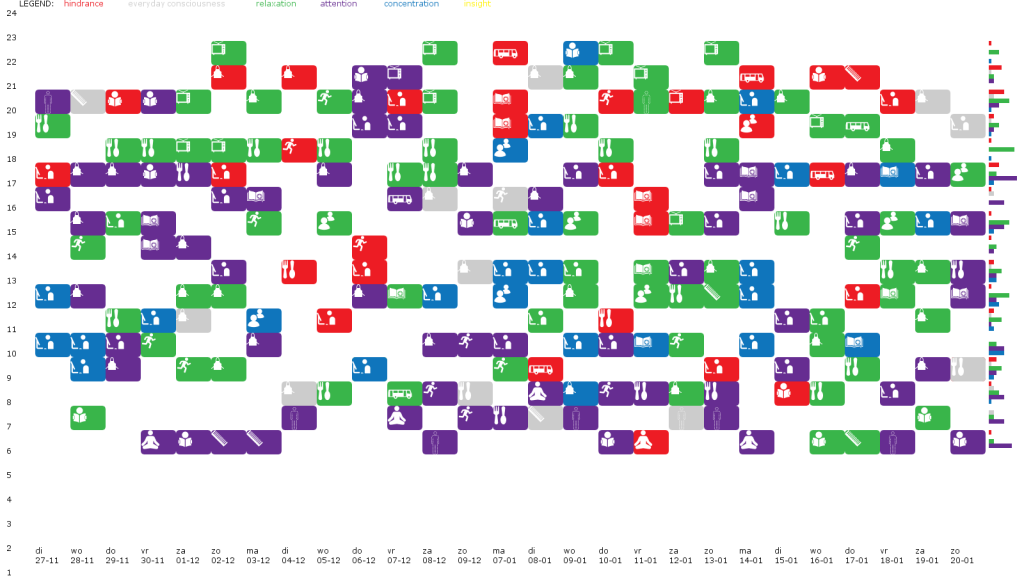
Surprising findings
To my surprise I found that during everyday activities like housekeeping and eating there is an interesting combination of attention and relaxation. Concentration and attention are present as expected during work, reading and study. Pure relaxation is mainly felt while watching a movie or television and social activities and also during sport and movement. With regards to time attention and concentration are mainly present in the morning. But also there’s a lot of attention between 17 and 18 hours which also surprised me. I always thought I was just sluggish at the end of the day but it holds potential for an intervention
Comparing lives

The next step was to find out how others would compare to my first findings. I found three participants who logged 43 days in total between 15-4-19 and 13-5-19. There were striking differences between the participants but biggest difference was between the three female and the one male participant. Here you see less differences in perceived mind-states. He also was the only one who reported a transcendent experiences. These weren’t insight experiences in the way I have defined them for this project but the participant rated them as very special and spiritual mind-states so I have decided to classify them as transcendent experiences
Combining lives
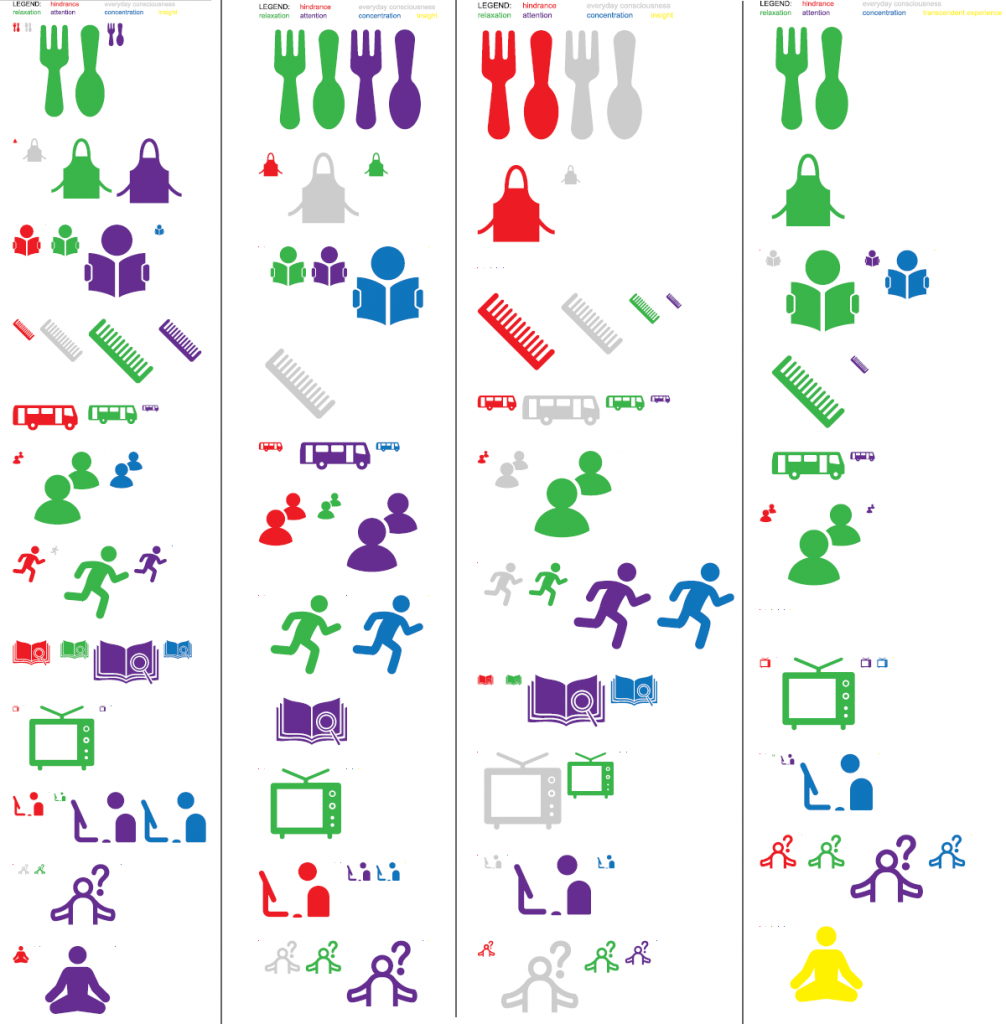
In all I have collected 70 days of data which amounts to 468 different data points. That is an average of 6,7 logs per day. To determine the most suitable activities and times for insight I have looked at the combination of positive states for insight: relaxation, attention, concentration on the one hand and little hindrance on the other. From the combined dataset I’ve made two visualisations for the activities and the mind-states that accompanied them. The findings from my own dataset are more or less replicated in the big set. But more hindrance was reported during housekeeping tasks mainly by one participant. She attributes this to lack of energy and feeling rushed.According to the criteria described above the most suitable time for the intervention seems to be between 15-16h and second best between 13-14h.While working the participants experienced a lot of attention and concentration but also a substantial amount of hindrance and not al lot of relaxation. So on the whole this seems a less optimal activity to intervene.
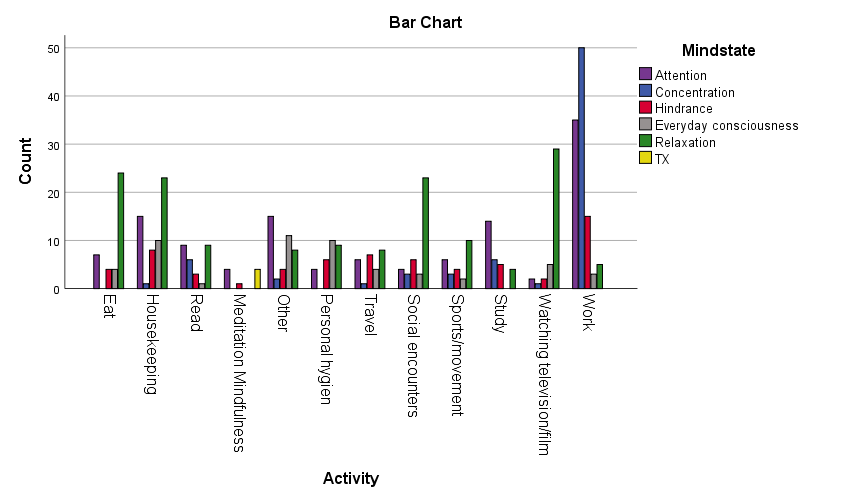
Conclusions
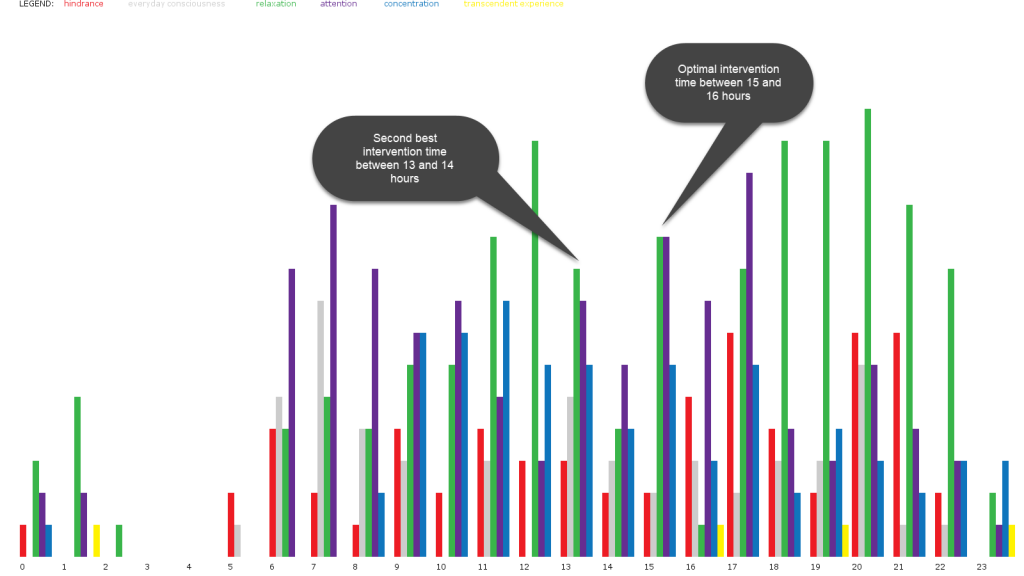
Simple, everyday activities seem the best activities for a wisdom intervention. And the afternoon seems the best time. This coincides well with my idea to use the Japanese tea ceremony as a template for my intervention. Tea time is in the afternoon and making tea involves a lot of simple tasks which require attention at the same time. I will explore further how the enabling mind-states may be enhanced using the act of making and drinking tea as a starting point.
